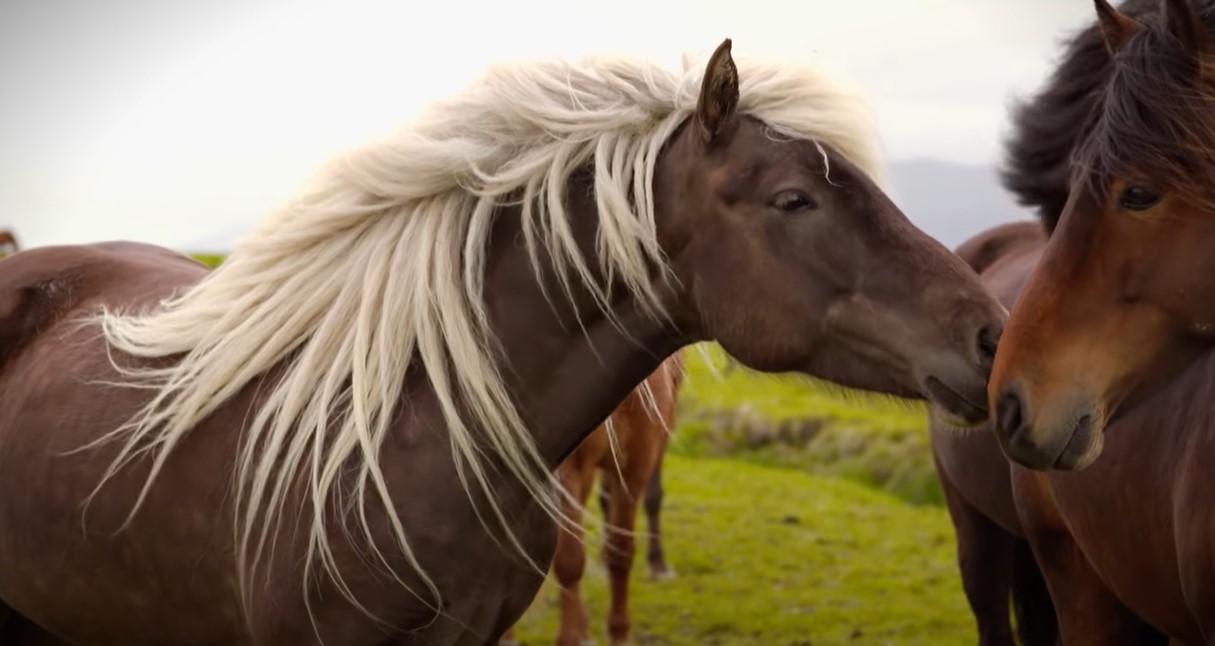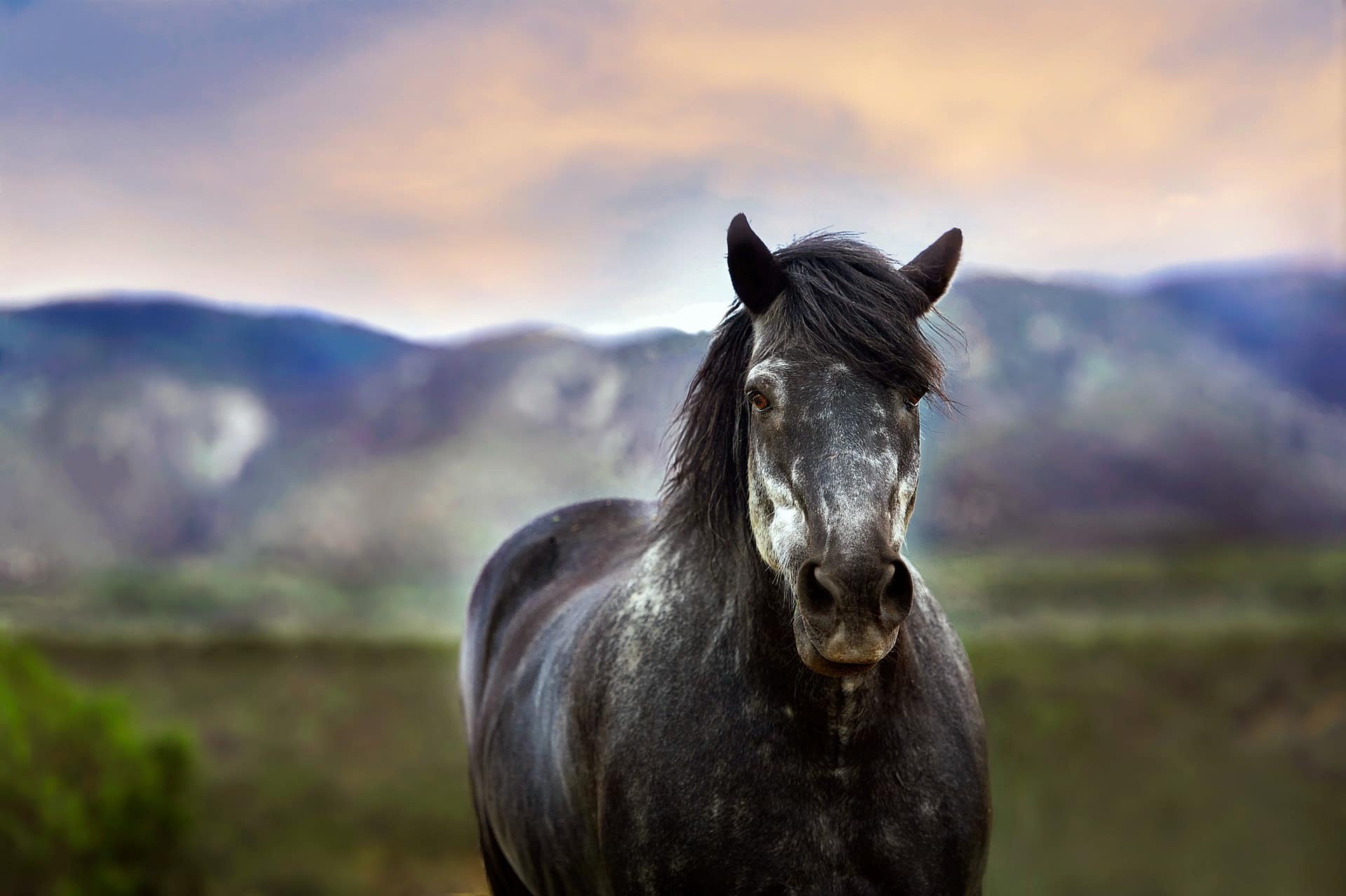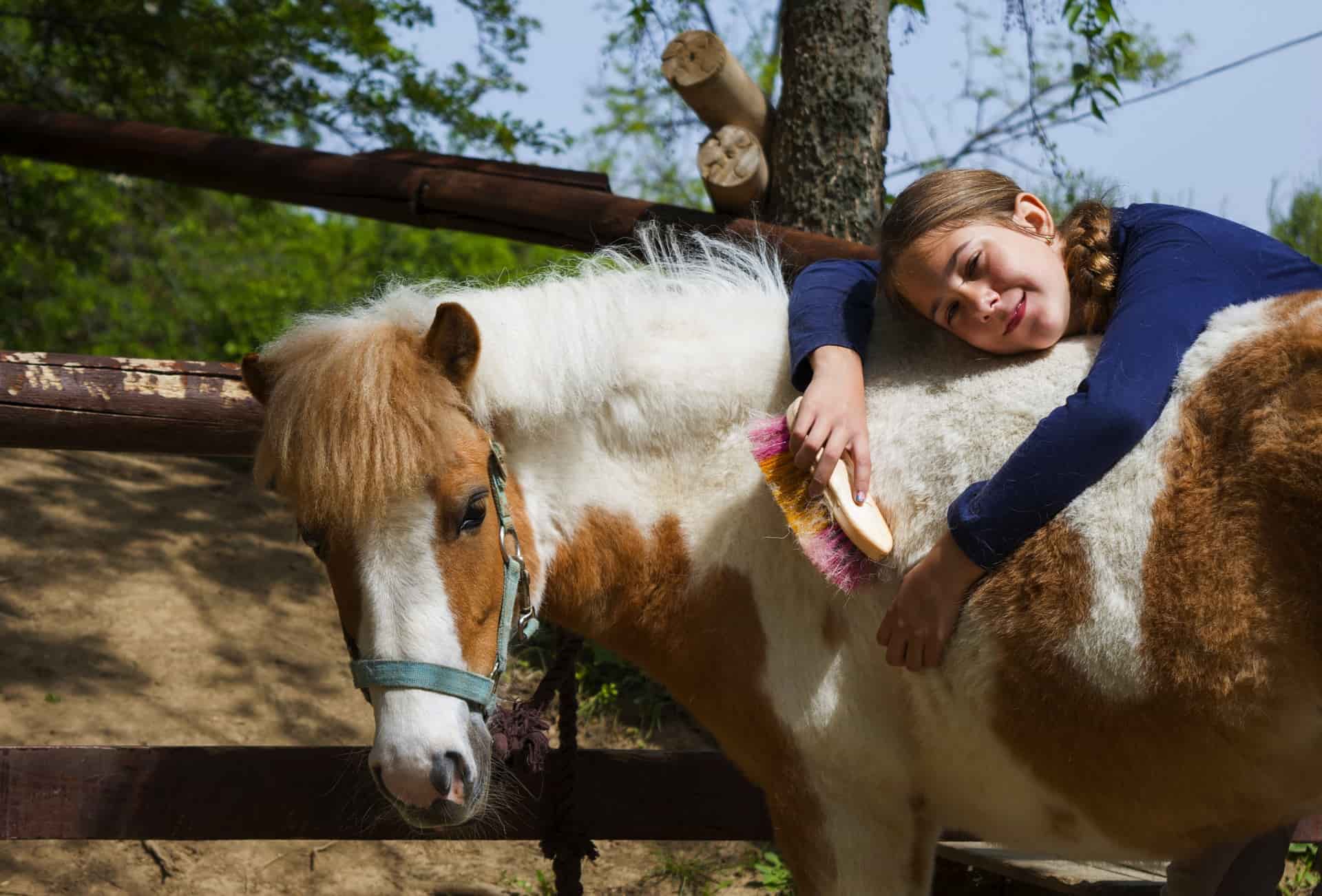Modern day horses are bred and trained for a variety of tasks. Some are trained for speed and racing, while other horses receive instruction for work around farms and ranches. Depending on the kind of work they’re intended for, horses may require coaching in various behaviors and skills.
Which brings us to the question – what is a gaited horse? Ideal for traveling and riding over long distances, the gaited horse demonstrates a distinct walking pattern that reduces energy expenditure. This makes gaited horses ideal for long trail rides that would otherwise wear out other horses.
What is a Gaited Horse?
By definition, ‘gaited horses’ are horses that move each leg independently. Of course, that might not seem like much in theory. But in action, gaited horses produce much less bounce, allowing riders a more comfortable ride. And because gaited horses follow a specific pattern that keeps one foot on the ground at all times, they spend less energy and thus travel longer distances.
While you can train horses to walk like a gaited horse, some breeds are naturally gaited. This makes them ideal for horse owners who intend to use them for long distance riding.
Different Gaits in Horses
The term ‘gait’ in the horse world essentially pertains to a manner of walking or how the horse moves. Things can get pretty technical when talking about different gaits that horses use, and people typically only focus on the five gaits of non gaited horses. So instead, we’ll try to touch on each one of the most distinct gaits.
Lateral Ambling Gaits
This four beat gait follows a sequence right hind, right front, left hind, left front. Ambling gaits are faster than a walk but slower than a canter, like the running walk. To qualify as a lateral gait, the horse must move both limbs on the same side in the sequence.
Diagonal Gait
A diagonal gait follows the sequence right front, left hind, left front, right hind. Contrary to the lateral ambling gaits, diagonal gaits use opposing sides of the horse’s limbs to complete the pattern. An example of a diagonal gait would be the trot. For some people, diagonal gaits are called ‘natural gaits’.
Three-Beat Gait
A canter is a prime example of a three-beat horse gait. To identify a pattern as a canter, the horse would have to have three feet off of the ground at the same time, with a single lead leg in contact. If the horse leads with its right leg, both hind legs would fall simultaneously, with the front left leg last to land, all before starting the pattern again.
Gallop
The gallop might appear like a faster canter, but this four beat gait requires that each foot land on the ground at different times. If the animal were to lead with its right leg, the sequence would follow right front, both hind legs independently, and then left front.
Flying Pace
Unique to the Icelandic horse, the flying pace is one of many special gaits and is a racing gait that entails a two-beat pace and suspension. Allowing the Icelandic horse to achieve speeds of up to 48km/h, the flying pace typically only finds purpose in short 100-200 meter distances.
Slow Gait
Unique to the Saddlebred (otherwise called the ‘horse America made’), this four-stroke gait touts an interesting broken pace. Considered one of many special gaits, the horse moves to a different timing to achieve a slow gait, which entails landing the hind foot and the fore foot on the same side at an interval of at least one second.
How to Know if a Horse is Gaited
You’d think it would be easy to spot a horse with a smooth gait, but they’re not always that obvious. That’s especially true if they start moving at a faster pace, and it becomes all too easy to lose track of their foot pattern. Nevertheless, the best way to identify a gaited horse would be to simply observe it.
Generally, gaited horses move in a four beat pattern. This means that every foot moves individually and will land on the ground independently of the others. From the side, you’ll see that a gaited horses’ feet follow a lateral pattern. That means that the front leg will always make contact with the ground before the rear leg on the same side.
Naturally Gaited Horse Breeds
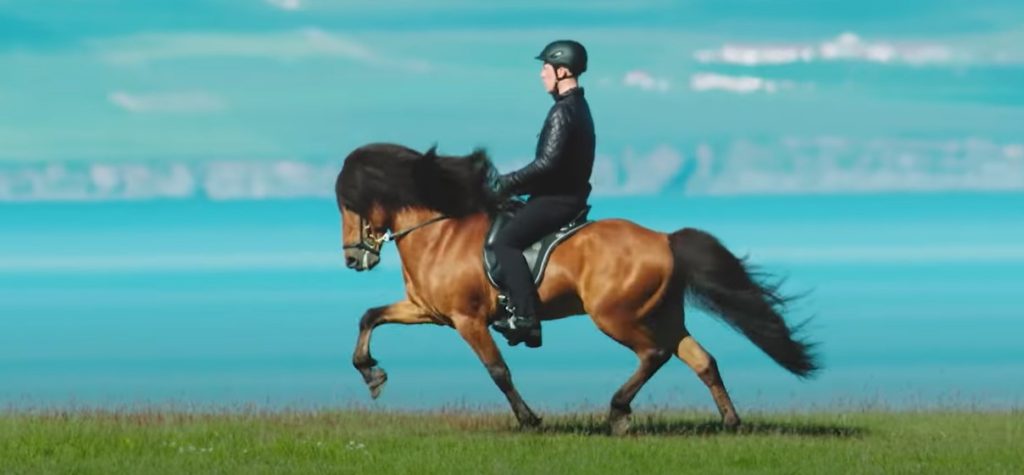
Some people actually call gaited movement patterns as ‘artificial’ because most horses are taught to move in this way. But that’s not necessarily completely true. Some horse breeds are naturally gaited, so they won’t require training to adapt the four beat movement pattern.
These breeds of naturally gaited horses include:
- American saddlebred horse breed
- American standardbred
- Appaloosa horse breed
- Icelandic horse breed
- Kentucky mountain saddle horses
- Missouri fox trotter
- Paso fino horse breed
- Peruvian paso
- Rocky mountain horse
- Tennessee walking horse
- Racking horse
Trotting horses once superseded gaited horses in terms of popularity because they were used in the time of horse drawn carriages. With time however, carriages became obsolete, and people today tend to ride horses directly on their backs, which has yet again increased the demand for horses with smooth gaits.
Needless to say, popular gaited horse breeds like Icelandic horses, the Tennessee walking horse, the Spanish breeds Paso Fino, Peruvian Paso, American Saddlebred, and Missouri fox trotters have once again reached peak popularity in the world of horses.
Benefits of a Riding Horses That are Naturally Gaited
So, why exactly should you care about how your horse walks and whether it’s gaited or not? Well, although it might not seem like such a deal-maker, gaited horses come with a handful of benefits that might make them more suitable for the kind of work you expect them to do around your ranch and beyond.
Long Distance Riding
One of the biggest reasons why people choose to own and train naturally gaited horse breeds is because they do particularly well during long trail rides. Four beat ambling gaits guarantee that your horse will have at least one foot off of the ground at every step.
With this four beat stepping pace, the horse more effectively distributes its weight (and some horses weigh a lot) across its legs, allowing more efficient energy conservation. And because gaited breeds improve on their stamina for long distance trail riding, they turn out to be exceptional for endurance riding.
Riding Comfort
If you’ve ever ridden a horse before, you probably already know that they’re not all that easy or comfortable on the legs, hips, and well, the body in general. All of that movement underneath your weight can cause you to bounce up and down constantly, applying pressure to your lower back among many other parts of your body.
With a four beat ambling gait, a horse rides significantly more steady than other breeds. For you as a rider, this means a consistent, easy pace that doesn’t cause as much movement, bounce, and pressure even during a running walk or faster. So while the horse itself might have improved endurance because of its gait, the rider also gets a stamina boost because of the added comfort.
Easy, Calm Temperament
Interestingly, most gaited horses have been found to have an easier temperament than other breeds. While it’s not entirely clear why they seem to train better and take instructions more willingly, the sentiment seems to be widely accepted across the equine landscape.
Keep in mind though that not all horses in the naturally gaited horse breeds category showcase the same temperament. Lots of factors contribute to a horse’s personality. In general however, it seems that most gaited horses showcase an easy, amiable temperament.
Of the many different horse breeds, the naturally gaited horses including the Icelandic horse, the Tennessee walking horse, and the Missouri fox trotter, Peruvian Paso, and the Paso fino typically get tagged as some of the easiest breeds to work with.
Tips on Riding a Gaited Horse
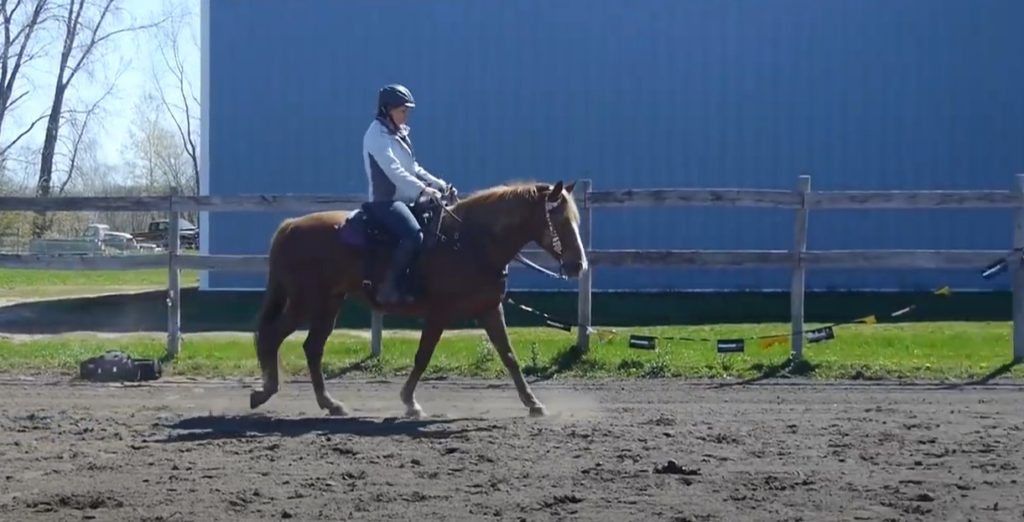
If it’s your first time riding a gait, you might notice a few differences in feel and form. That’s totally normal – a gaited horse tends to provide a distinct experience versus other breeds. So to make sure you jive with your new horse, here are a few tips for riding one of the gaits.
Assess Your Physique
If your main purpose for riding a gaited horse is to be able to ride long distances, then assessing your physique becomes a standard first step. For larger riders, go for a larger horse breed. A 15-hand horse or over should be ideal, like a Rocky mountain horse.
However, smaller riders should go for one the smaller horse breeds. They might do just fine with an Icelandic horse, Peruvian Paso, or a Paso Fino.
Maintain Proper Alignment
As in any horse riding situation, proper body alignment is key. When riding gaited horse breeds, it’s particularly important to keep your ear, shoulder, hip, and heel aligned. It also helps to hold your hand a little higher than you usually would given the horse’s higher head carriage.
Let the Horse Lead
Because a gaited horse rides smoother, it’s possible that you might feel that it moves faster than most breeds. This prompts riders to execute commands and assert dominance over the animal, getting in the way of its natural pace. Instead, let the horse establish its pace and achieve a steady, easy gait.
Remember though that not all gaited horses ride the same. For instance, the Racking horse, or sometimes the American Saddlebred, tends to use a distinct intermediate gait that feels like a sped up slow gait, but not exactly. This leaves the rider feeling relatively steady, with the rest of the horse moving around him, almost like the horse climbing a ladder underneath you.
In this case, it’s always best to allow your body to move with the horse. It also helps to move your leg slightly ahead of your knee so that your ankle is positioned slightly forward in relation to your hip, shoulders, and ears.
Frequently Asked Questions
What is the difference between a gaited horse and non gaited horses?
When it comes to their standard walking pace, there isn’t really a difference between a gaited horse and a normal horse. The differences start to show however when it comes to their higher speeds like the trot or running walk, and beyond.
With several horse breeds of the non gaited kind, you can expect a standard two beat stepping pace for most speeds which means two of their feet will typically be in contact with the ground at any given time. That also means that their feet tend to move simultaneously with others, making for more movement on the saddle.
With gaited horses like the Paso Fino or Tennesse walking horse however, every foot moves independently. This gives the horse greater balance, a smoother stride, and better endurance because the legs don’t get as overworked as with non gaited breeds.
What is the purpose of a gaited horse?
Aside from being commonly used horses for long distance trail riding, gaited horses also find purpose among elderly riders and those with joint problems. Because of the smoother ride that gaited horse breeds provide, they don’t apply as much pressure on the back and joints of riders, allowing a more comfortable riding experience.
Are gaited horses capable of jumping?
Yes, gaited horses can be trained to jump as long as it can canter. And while some owners push the limits by training gaited horses to the level of jumping competition and various equestrian disciplines, it’s important to keep in mind that these animals are best trained for flatwork and long trail ride purposes.
Read more in article about gaited horses jumping.
Do gaited horses need special saddles?
Yes and no – and it depends entirely on your horse and your own preferences. Some saddles are designed specifically for gaited horses. These specialized saddles weigh much less than the usual saddles, considering the long distances that gaited horses might have to travel.
Aside from that, gaited horses’ muscles move differently. So their saddles should provide more room to accommodate these distinct, specialized movements. Keep in mind though that non-restrictive saddles should be the golden standard even for non gaited horse breeds to prevent injury, discomfort, and inefficient performance.
See our guide with recommendations of the best horse riding saddles for some great choices.
How do you ride a gaited horse?
The essential pillars of proper gaited horse riding lies in your alignment and your control. For first time riders, experts recommend getting a feel of the horse before attempting to apply any commands or techniques that might stifle its natural gait.
Gaited horses tend to move faster and may feel odd underneath your weight because of their reduced bounce and streamlined performance. Most of the time, allowing the horse to move at a comfortable, steady pace should help you get a better understanding of how it moves and how you can adjust to maintain the horse’s gait.
You’re in for a Smooth Ride
Beloved for their easy temperament, smooth ride, and enhanced endurance, gaited horses provide wonderful companionship and performance on farms and ranches. Bringing new meaning to the term ‘work horse’, these animals push the limits of endurance with their intelligent walking patterns.
A definite asset for any farm, a gaited horse may outlast many non gaited horse breeds that would be too tired to handle the kind of long, arduous work that these majestic animals can perform. Just remember though – they ride differently. So if you’re only just learning what is a gaited horse, you might want to familiarize yourself with the details to maximize its potential.
